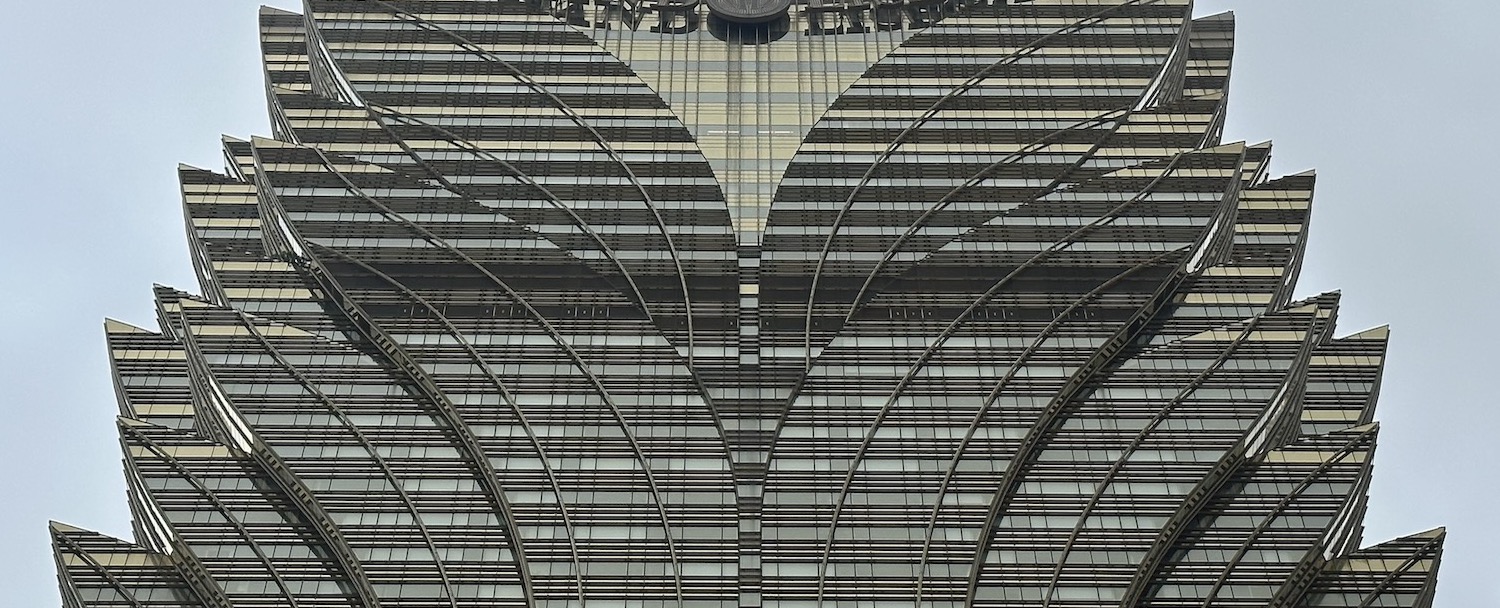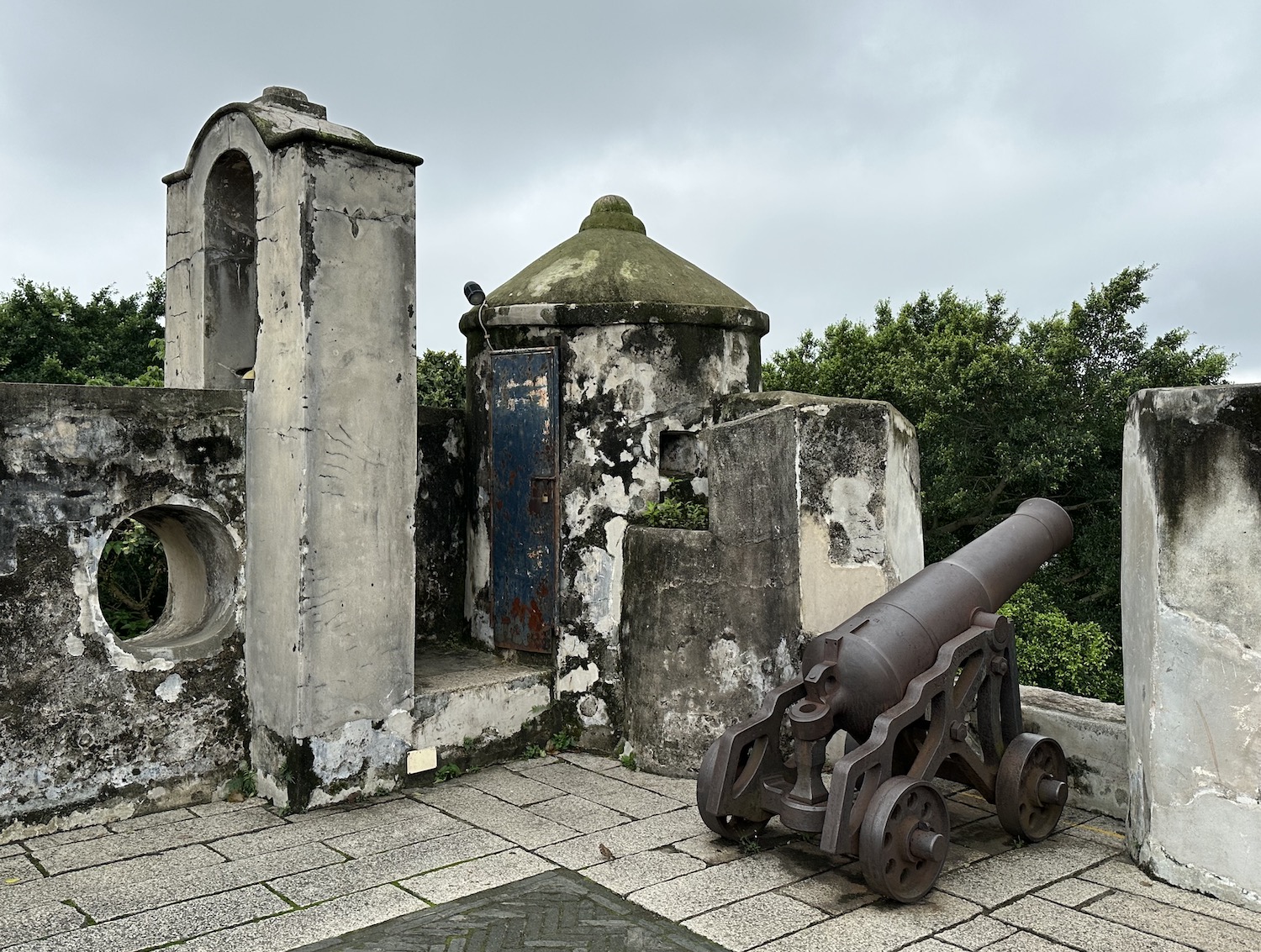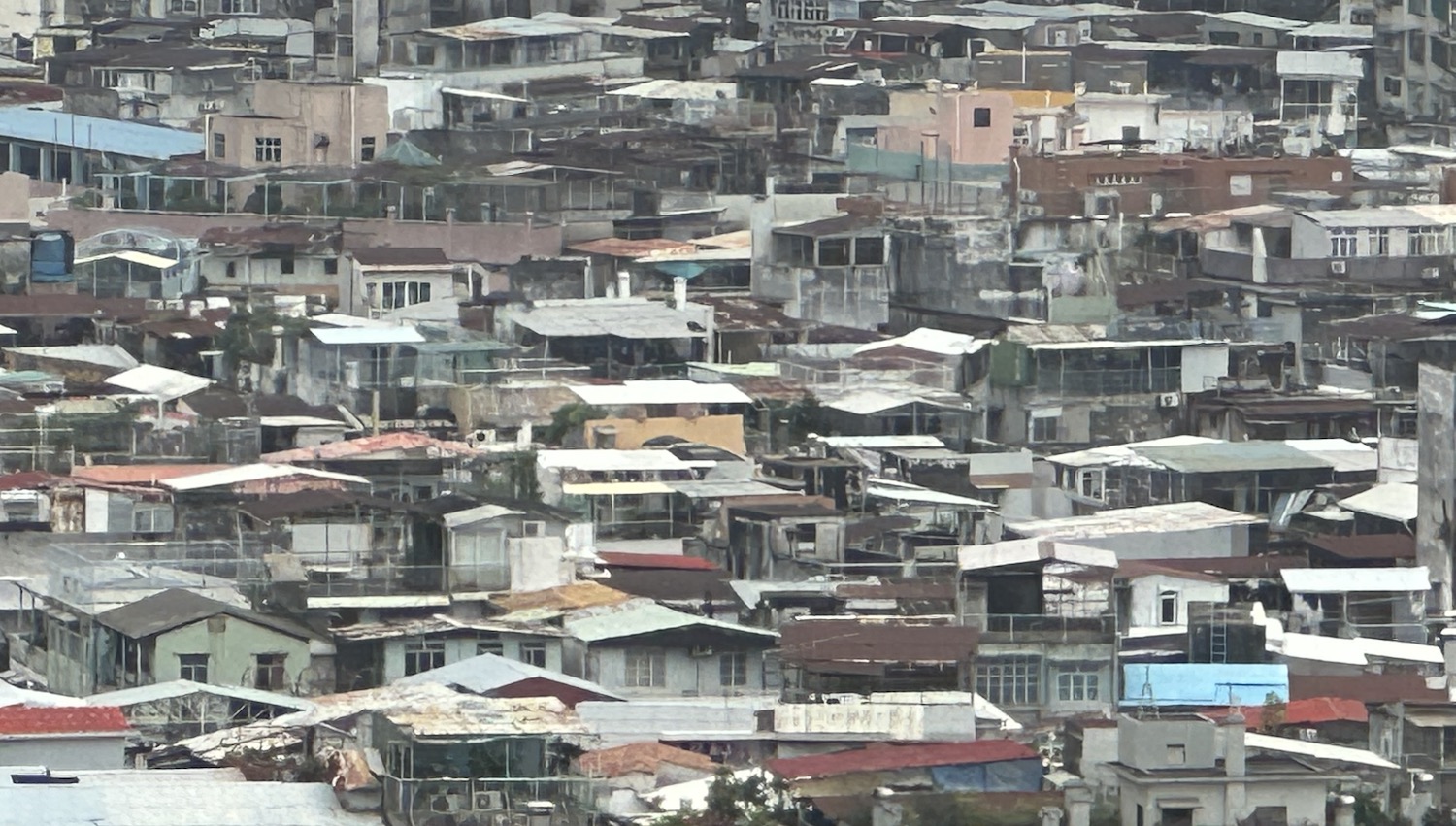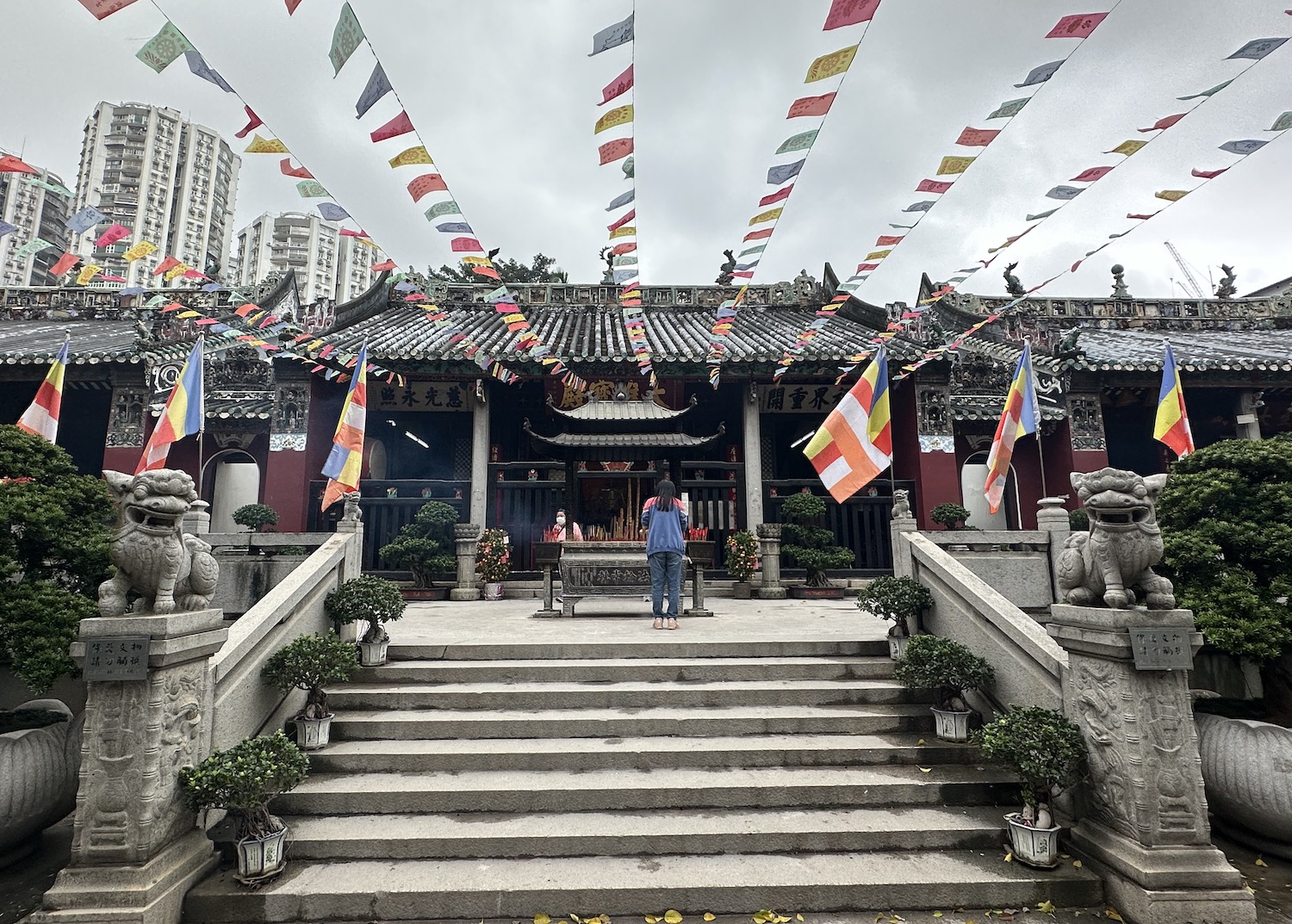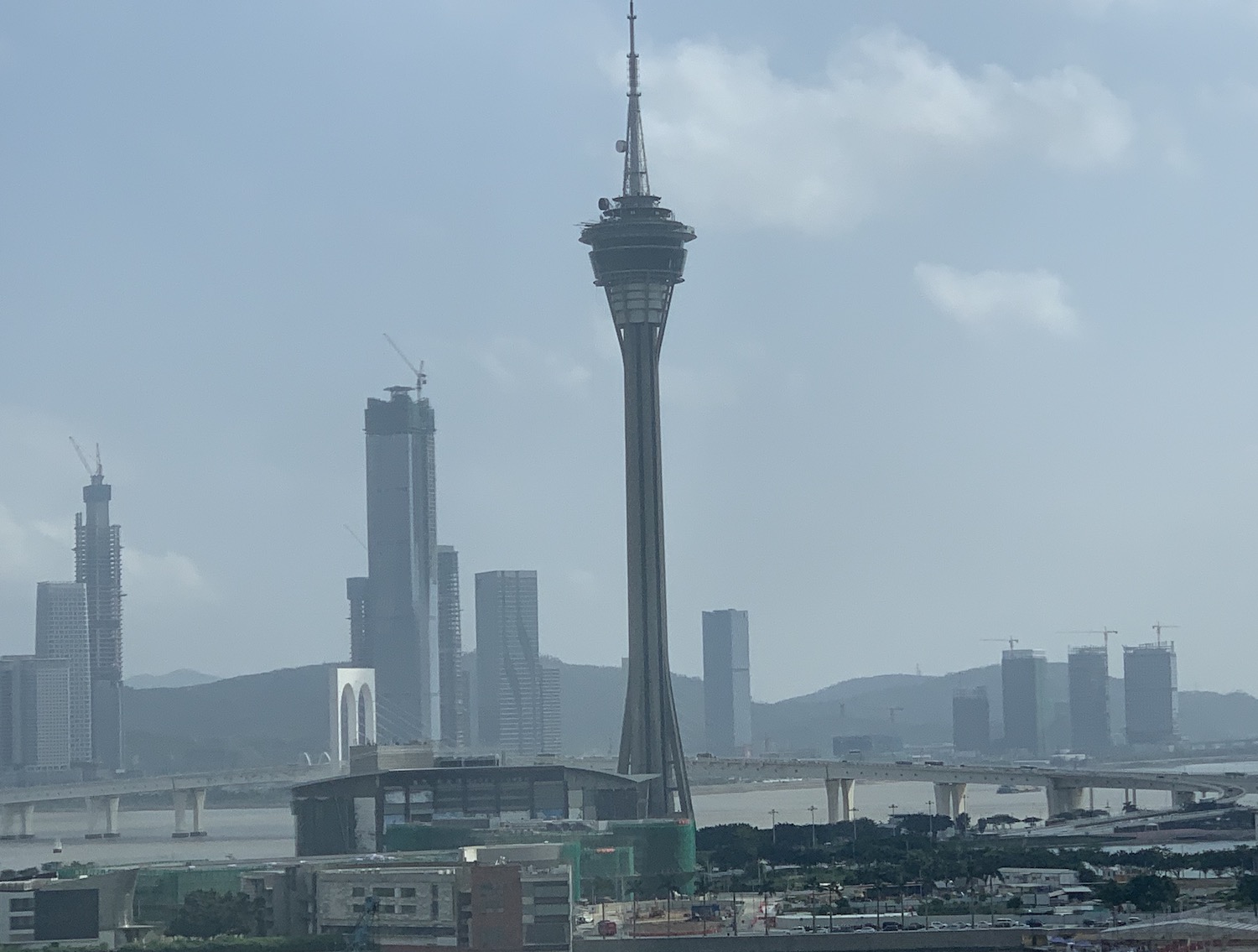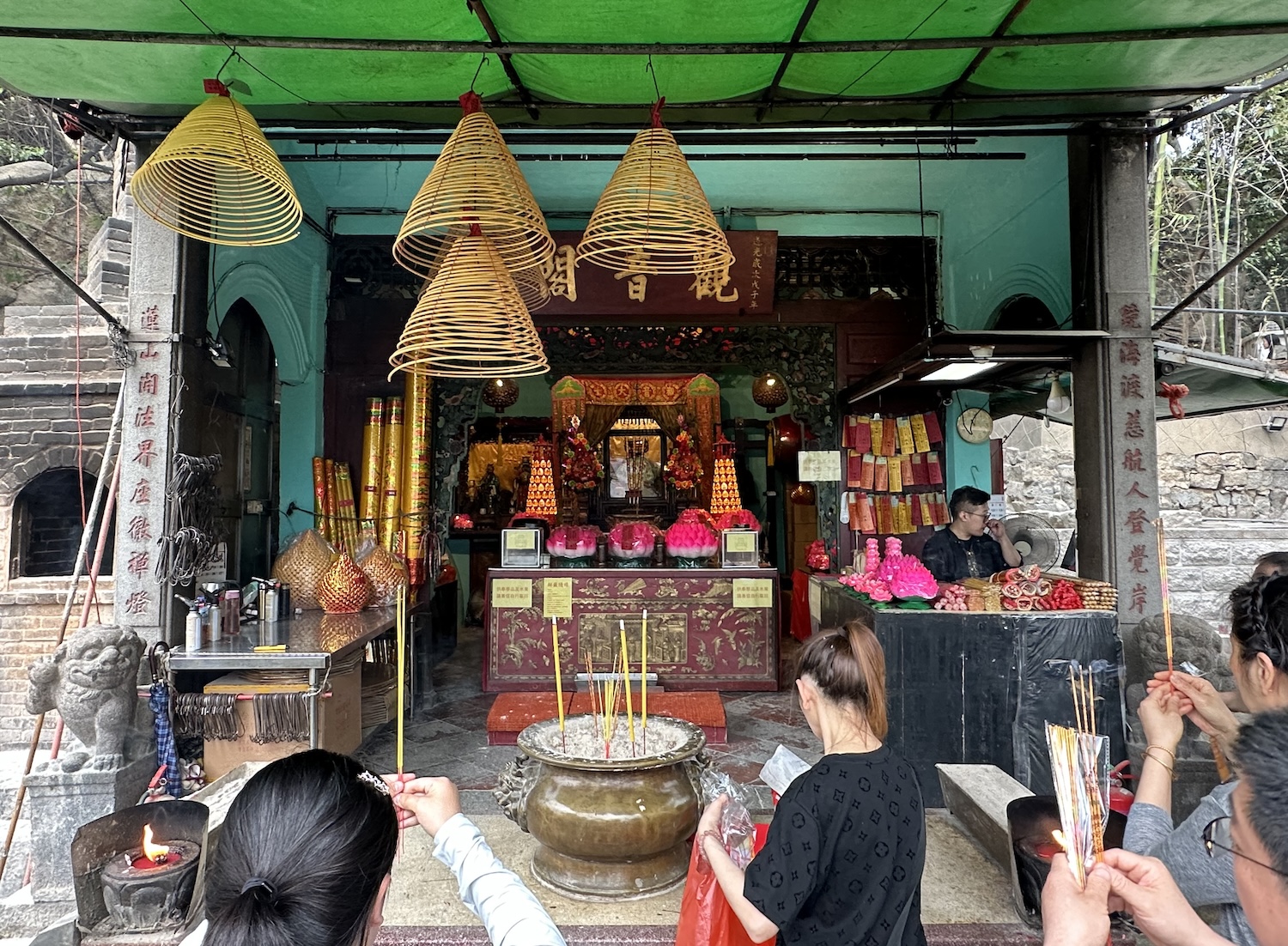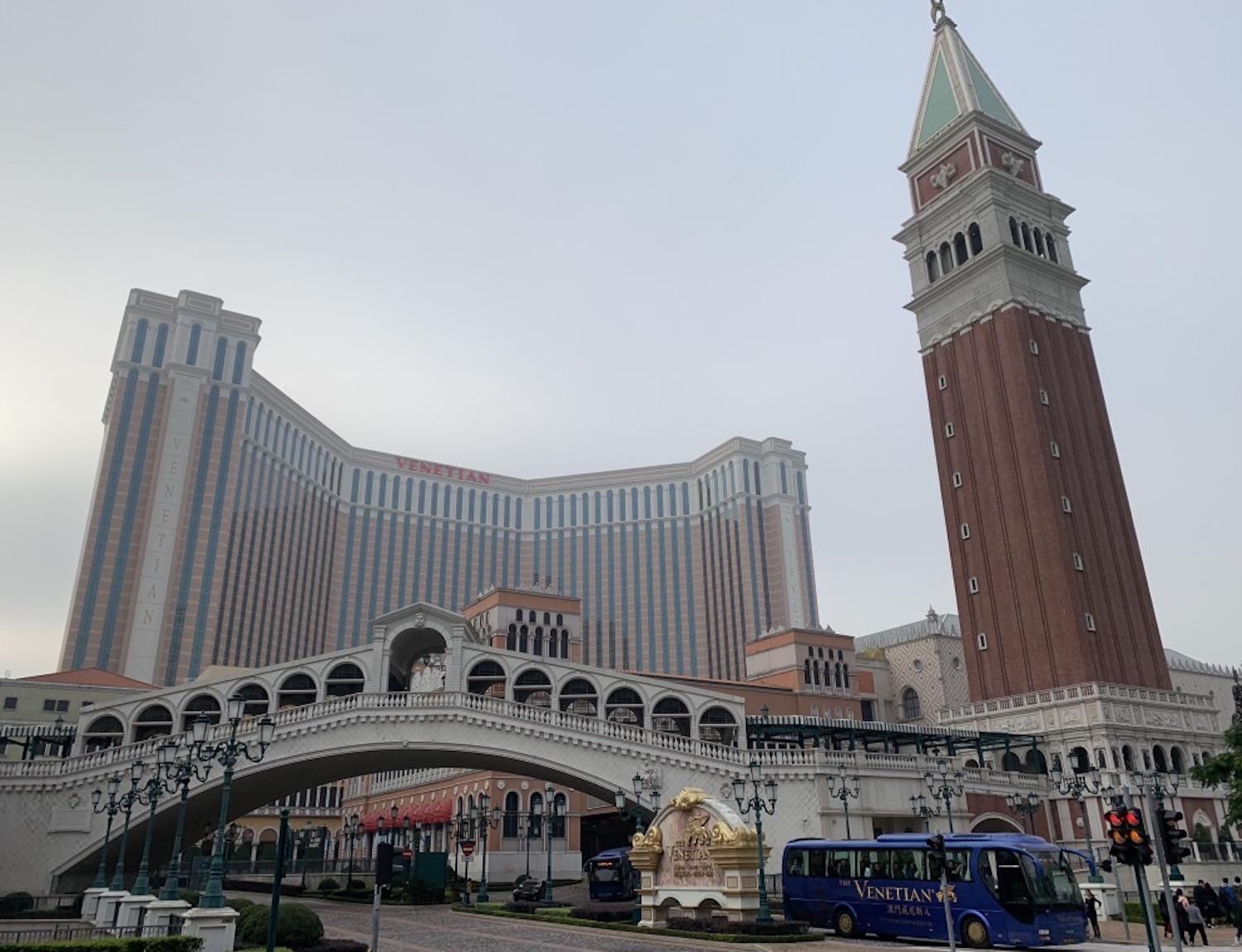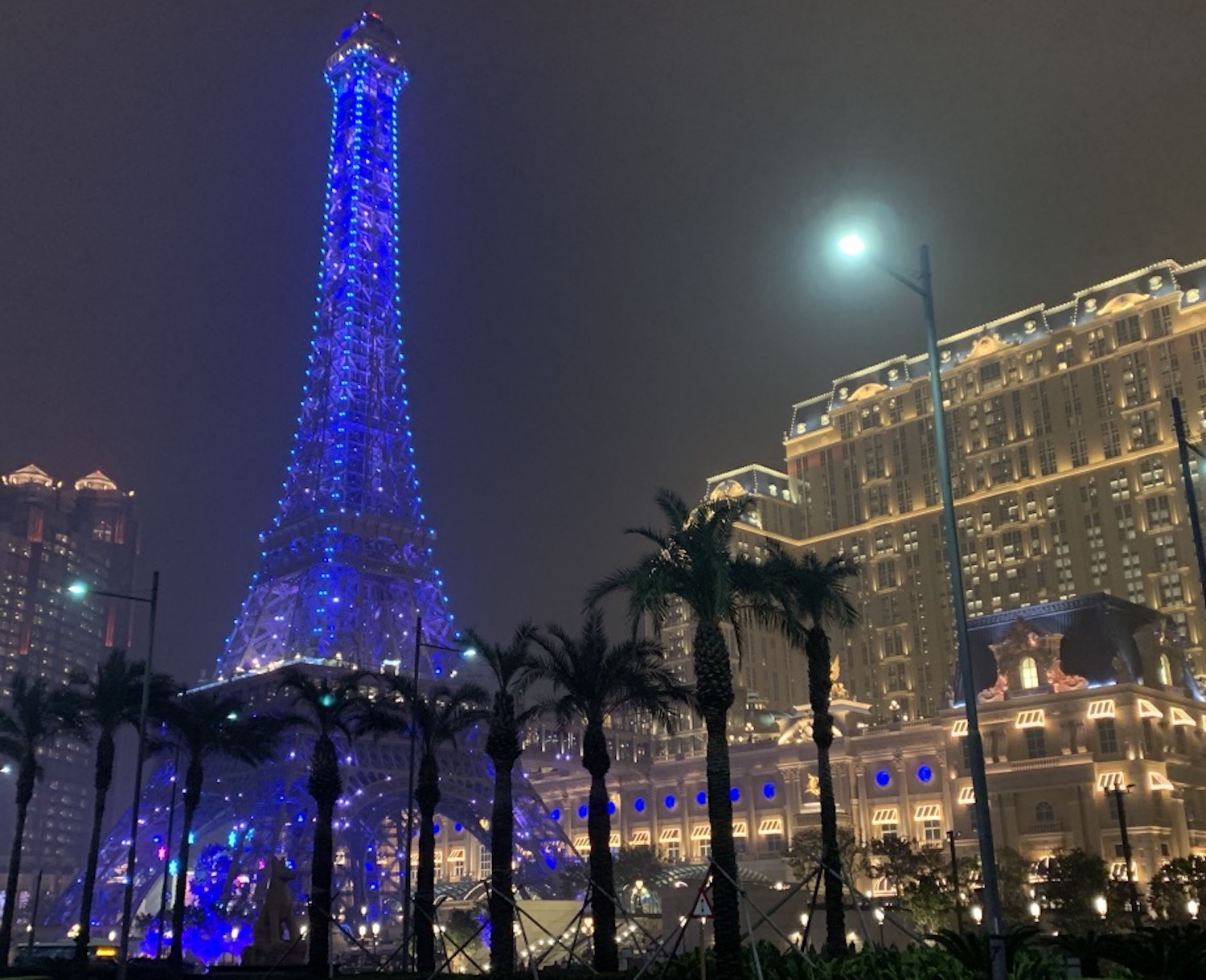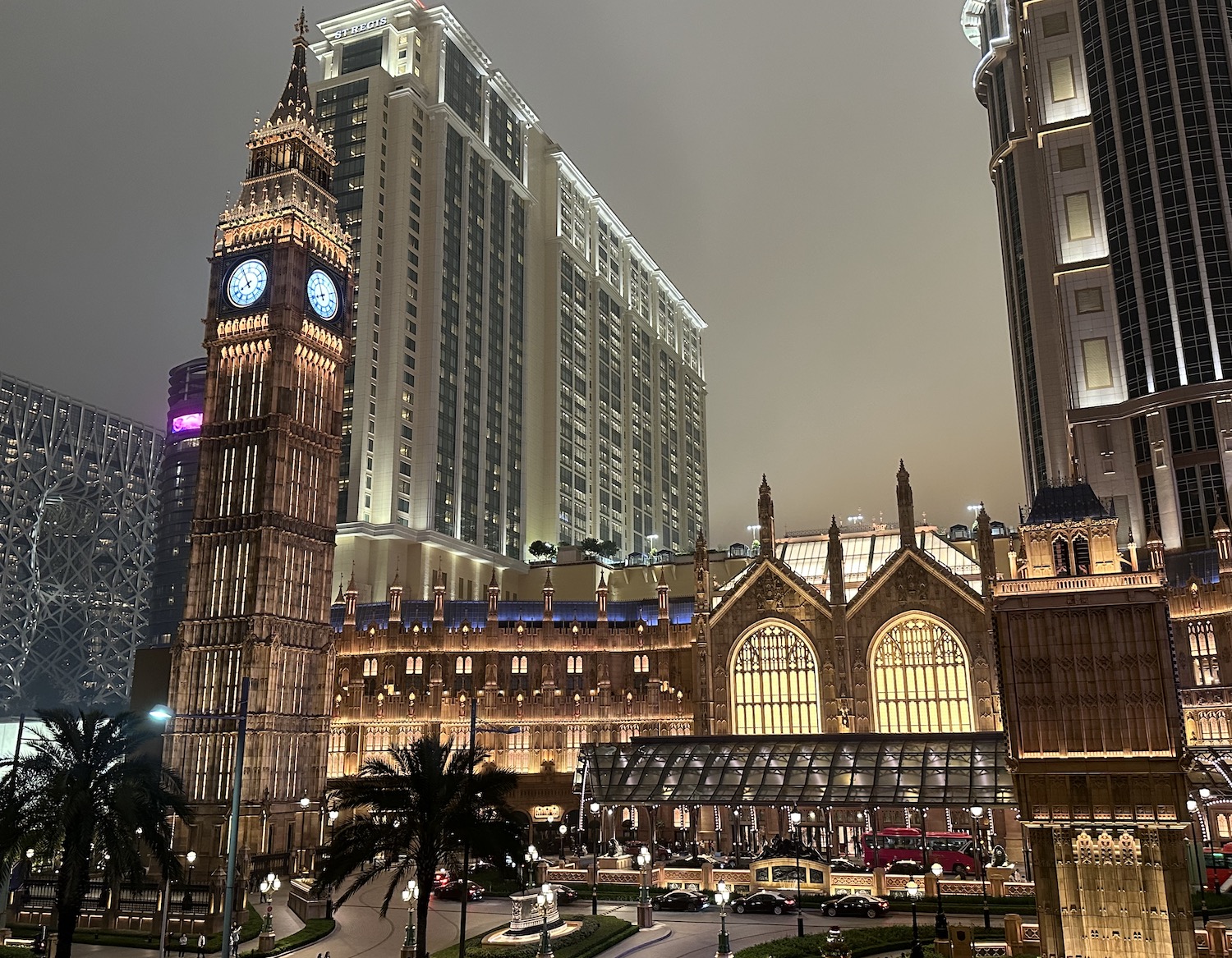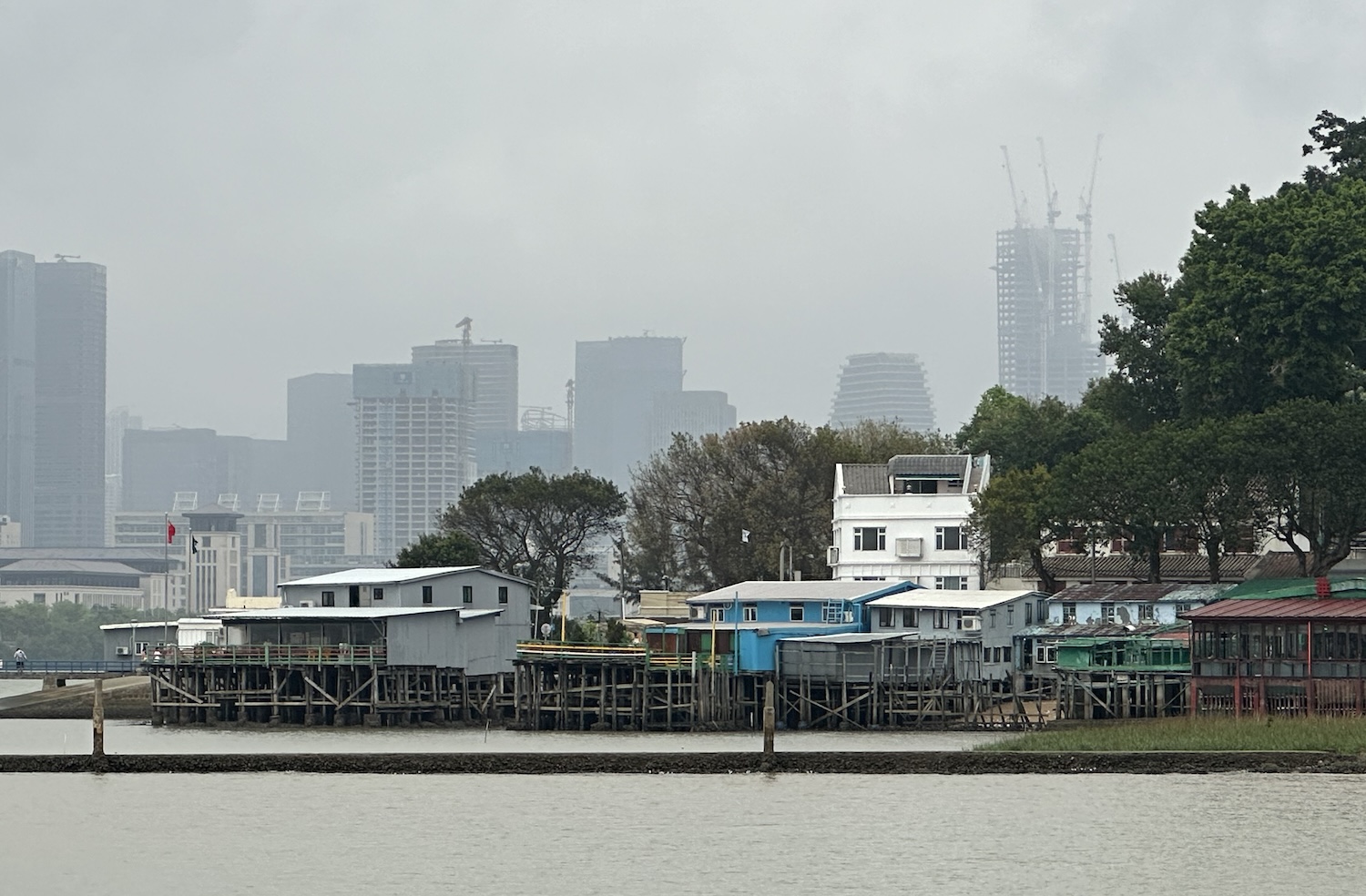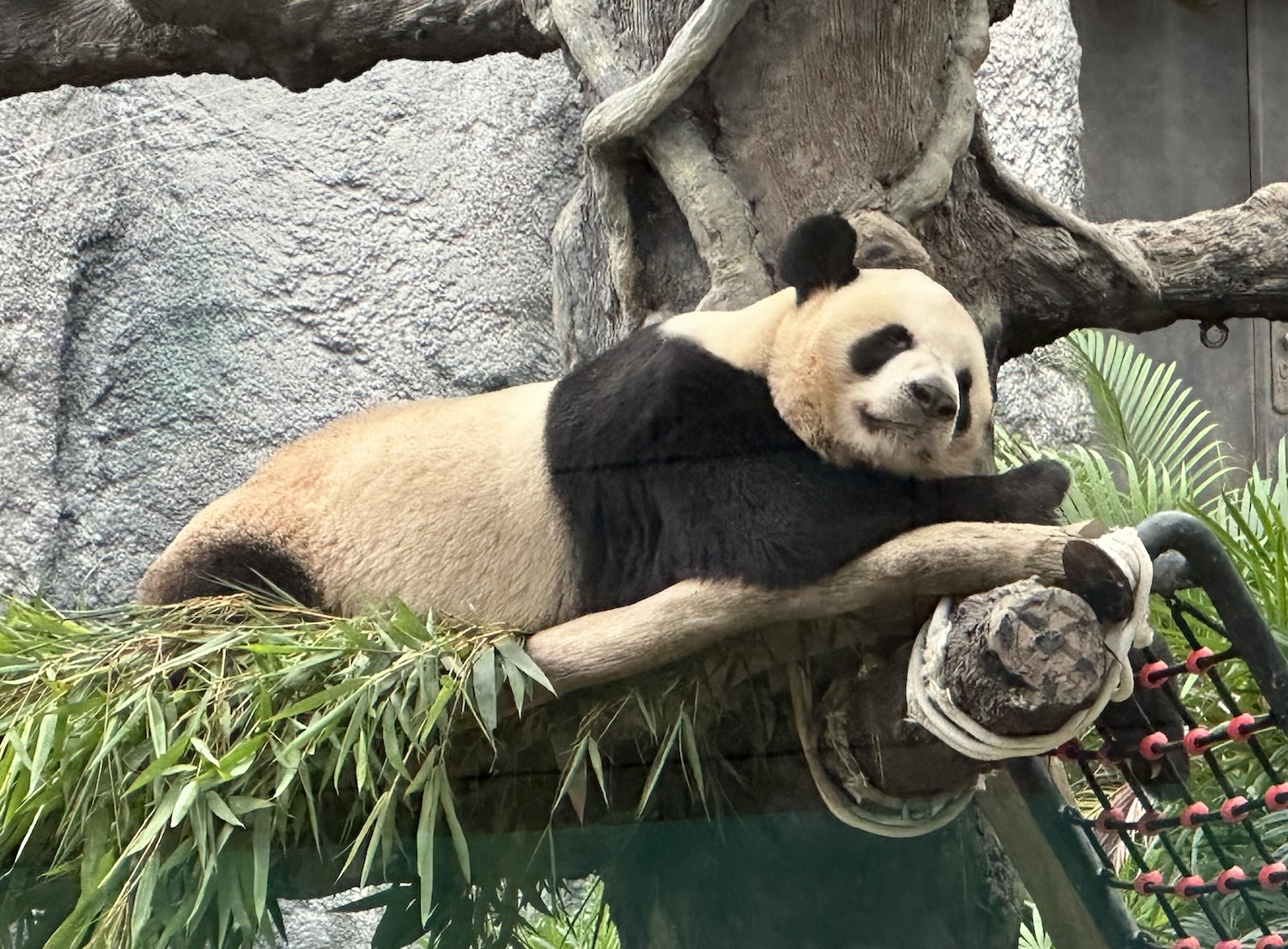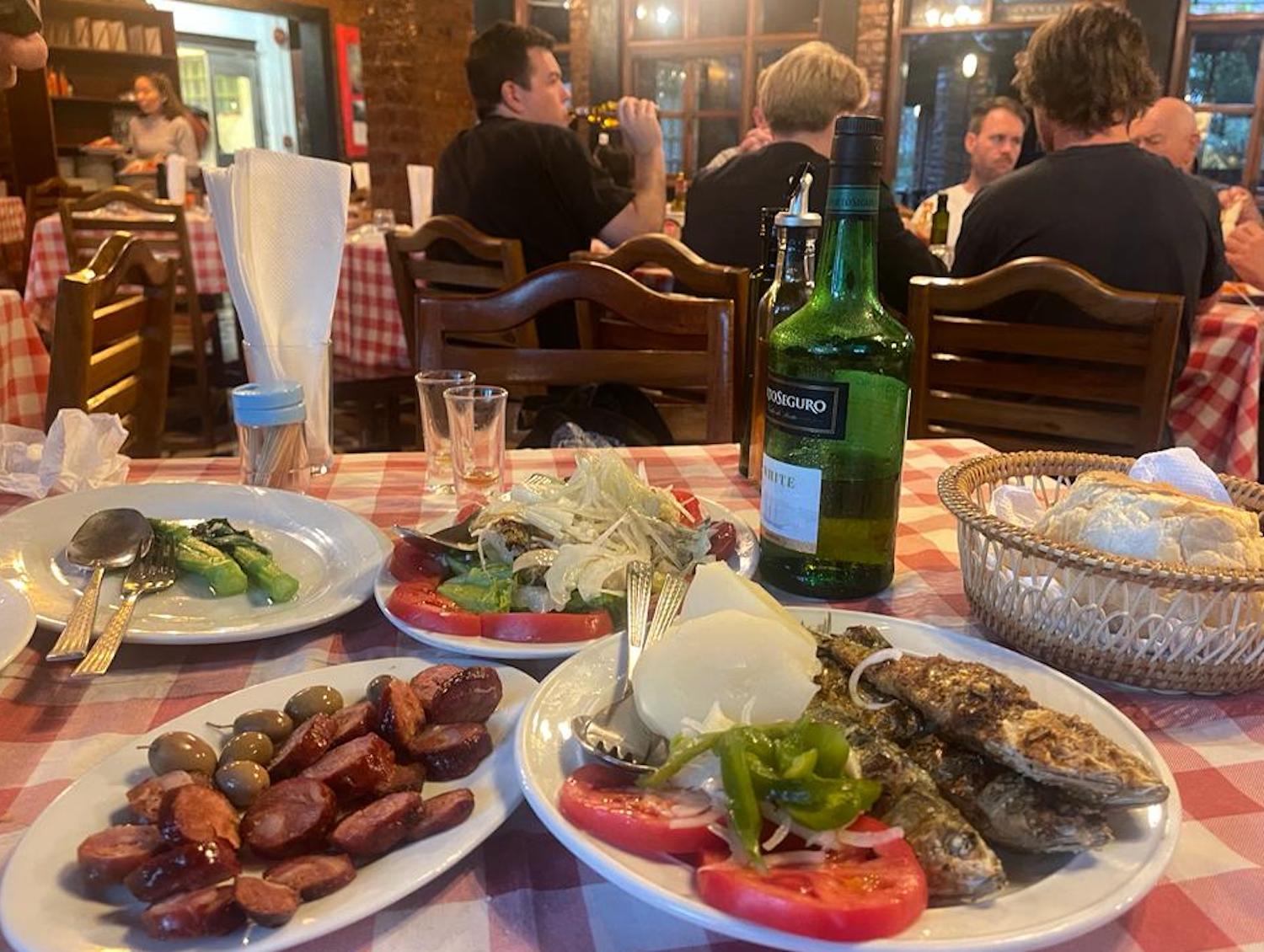Macau primarily attracts visitors who want to gamble in its glitzy casino resorts on the Cotai Strip that copy almost exactly those in Las Vegas. This is the only place in Greater China where betting is legal, and Mainland punters flood across the border to indulge. In addition to this oddity, Macau has an interesting history as a Portuguese colony, and, like neighbouring Hong Kong, a controversial imminent future as part of China’s Greater Bay Area. This means there are also plenty of cultural insights to be gleaned here.
Much smaller than Hong Kong – 700,000 people live in just 30 square kilometres – Macau is the single most densely populated place on the planet and, thanks to the gaming industry, the richest place by GDP per capita, although it also has appalling levels of inequality. It is ideal for a long weekend, yet it is sadly overlooked or underrated by too many visitors to the region who prefer to stick to the big ticket appeal of its frienemy. Personally, I shot over here again the moment it was possible to do so after almost three years of Covid isolation, when the border had been closed and the roulette tables had stood empty.

Macau was first inhabited during the Han Dynasty between 202 BC and 220 AD, and it remained sparsely populated right up until the Portuguese invasion of 1513 that led to the first European settlement in China. Following military clashes with the Ming Dynasty, Portugal secured a permanent lease over Macau in 1557, from when their merchants all flourished, some exporting Chinese silk to Japan, others Japanese silver to China, while their missionaries imported Catholicism from back home.
However, all this trade was savaged by decades of local conflict with the Dutch, the Shogun’s sakoku policy that cut off Japan from the rest of the world for 214 years, the Opium Wars that weakened China, and then the establishment of nearby Hong Kong as a rival British trading post with deeper waters capable of handling bigger ships. It was in an attempt to generate additional revenues in the face of all this that gambling was legalised in 1849 at more than two hundred licenced “fan-tan houses”.
Despite Macau’s decline, Portugal was able to take advantage of the frailty of the Qing Dynasty to formalise sovereign control of its colony in 1887, around the time that Macau became infamous for trading slaves kidnapped from Guangdong and shipping them to plantations in South America.
Change came when the Chinese Revolution in 1949 triggered waves of Cantonese refugees, rapid urbanisation and the wider spread of betting, which was permitted at casinos from the early 1960s. The anti-colonial Carnation Revolution in Lisbon in 1974 caused Portugal to relinquish Macau as an overseas territory and acknowledge it as a “Chinese territory under Portuguese administration”. As negotiations proceeded between China and Britain over the handover of Hong Kong in 1997, China and Portugal began talks over Macau that ended with an identical transfer in 1999, with the promise of “one country two systems” for fifty years as a Special Administrative Region of China run by a local Chief Executive. Macau was the very last extant European territory in continental Asia, the last colony to be freed from the yoke of Portugal, and the only one not to join the Community of Portuguese Language Countries, even though Portuguese is one of its official tongues.
Following the transfer, the SAR further liberalised its gaming laws to permit foreign investment in its casinos, sparking a surge of growth at the start of the twenty-first century. Therefore, unlike in Hong Kong, there have been no political protests or calls for independence and no consequent Chinese interventions.
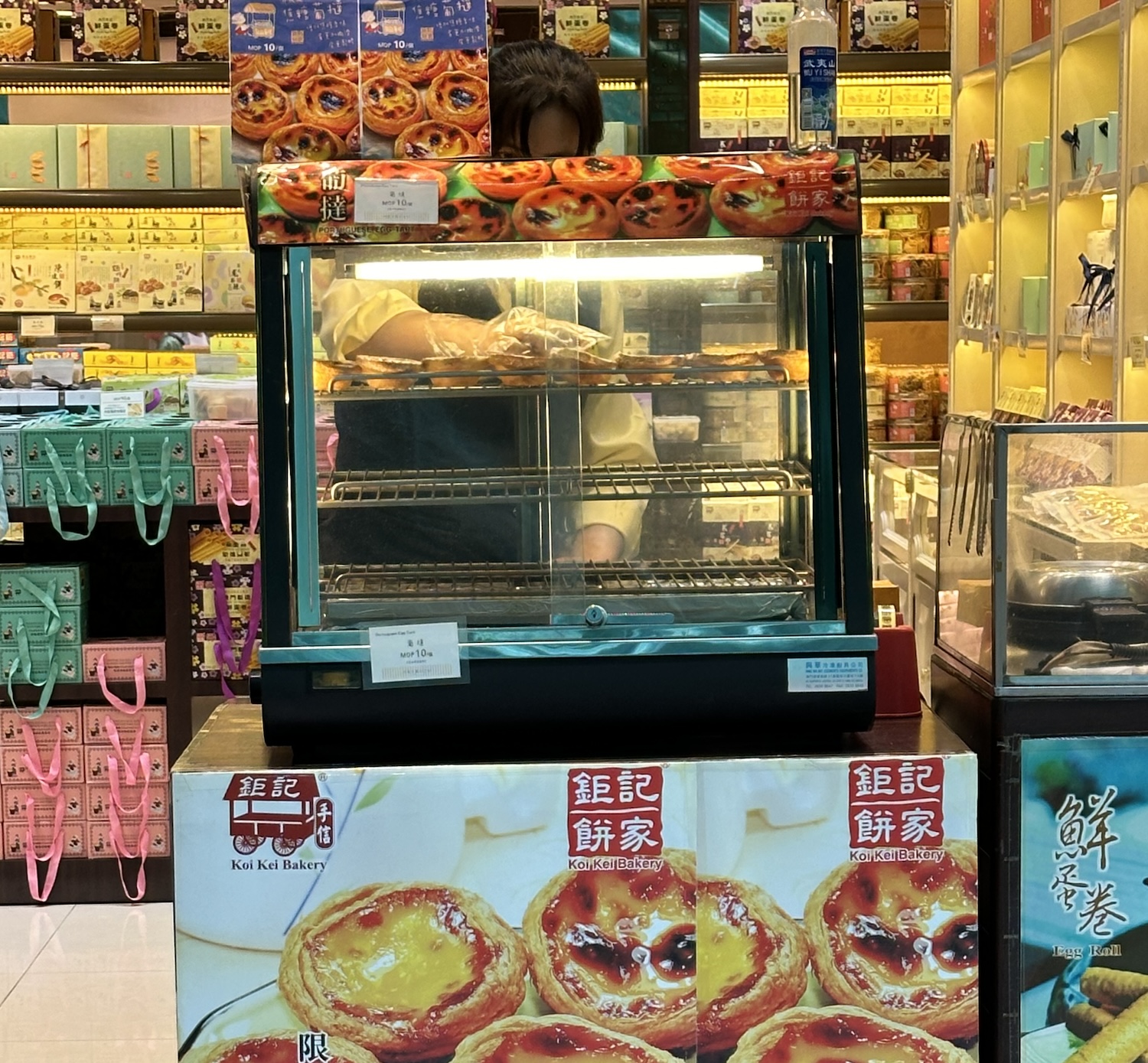
This Portuguese-Cantonese heritage has created a highly visible fusion culture. Macanese people are literally a blend of Portuguese and Cantonese blood, attending as many Catholic ceremonies as dragon dancing festivals, and enjoying pastel de nata as much as pork buns.
Macau has a sub-tropical climate with a hot, humid summer from May to September and a cooler, drier winter from November to March. The warm blue skies of the spring and autumn weeks are short but the ideal time to visit. Another excuse to come is the Macau Formula Three Grand Prix, run around the streets every November since 1954.
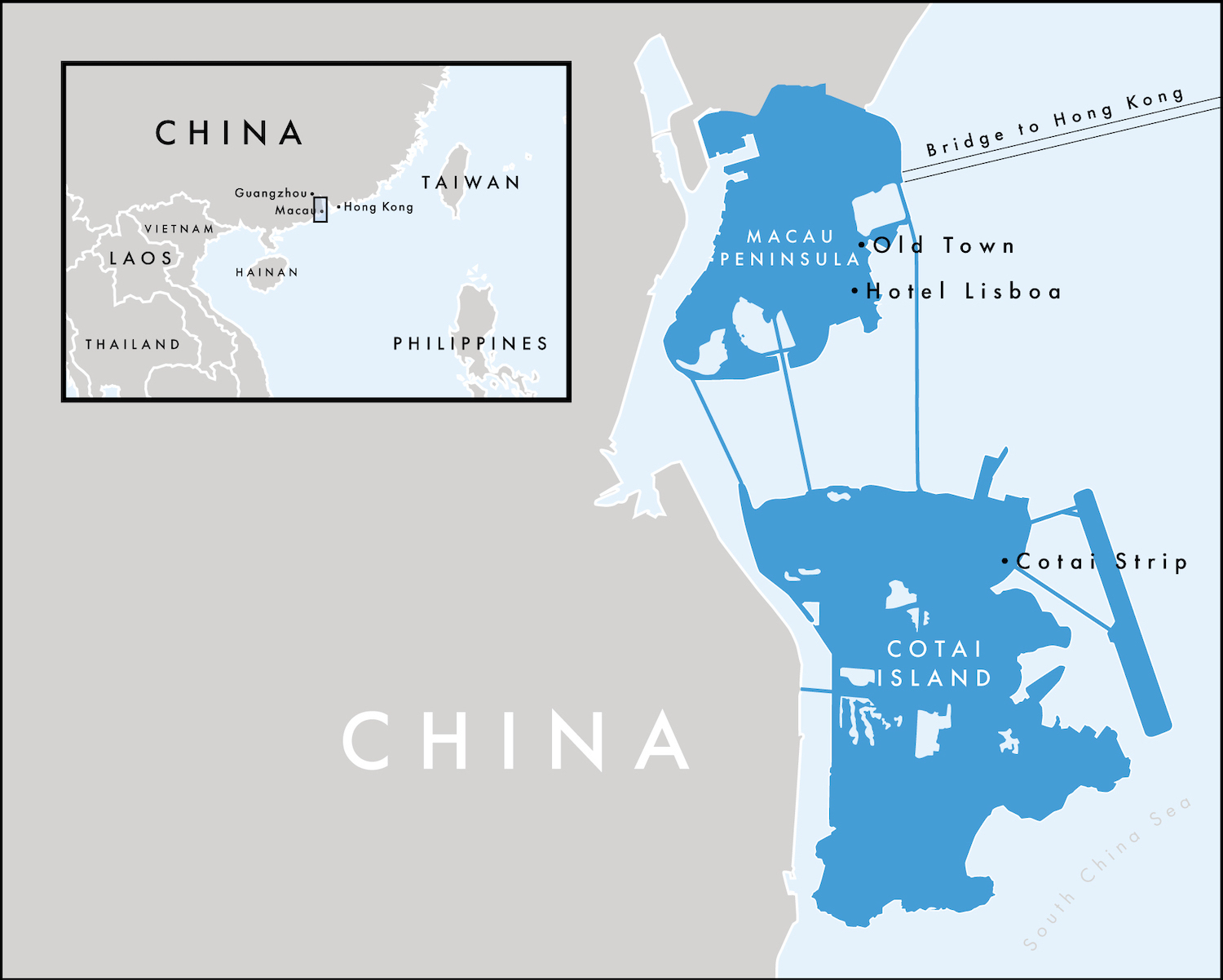
Macau nestles on the south coast of China, on the western side of the Pearl River Delta that opens into the South China Sea. On the eastern side, only 65km away, are both Hong Kong and Shenzhen. Less than 10km to the north is the emerging industrial powerhouse of Zhuhai. And all around is the Chinese province of Guangdong, with its capital at Guangzhou. No wonder Macau has been squeezed.
All of these great cities, and all the settlements in between them, are set to be integrated into a single metropolitan entity, the Greater Bay Area. Under a Beijing blueprint, they will become a mega city of 80 million people within a generation. Although Macau will undoubtedly maintain much of its unique Macanese identity, its economy, already largely dependent on inflows of Chinese gamblers, will certainly be at the discretion of the Chinese government.
The 853 – as Macau is affectionally known by locals after their international dialling code, which also serves as their zip code – was originally a collection of islands. The northern island, which is today Macau Peninsula, where most people live, became connected to the mainland through the natural process of sandy deposits gradually forming a massive tombolo.
The southern island, Cotai, was in fact no more than two little islets of duck farms and boat yards until as recently as 2005. Then the one to the south, Coloane, was joined to the one in the north, Taipa, by land reclamation in the middle around what is now the Cotai (a portmanteaux word) Strip, which is where most of the modern casinos and resorts are to be found today.
Travel between Macau Peninsula and Cotai Island is across the gorgeous broad lagoon where the Zhujlang River opens into the South China Sea. The gap is currently straddled by three road bridges (a fourth is under construction): the Ponte Governador Nobre de Carvalho (also known as the Old Bridge, as it was the first, opened in 1974) in the west, the main wavy white Ponte de Sai Van in the middle, and Ponte de Amizade (or Friendship Bridge) in the east.
Macau Peninsula
From the middle of the sixteenth century, Macau was of course a lucrative Portuguese stronghold and its proud Old Town in the middle of the Peninsula is a memorial to that golden era. It is a dazzling maze of gorgeous streets, all cobbled with black-and-white mosaics in the manner of Lisbon. This entire area, containing twenty-nine separate monuments, including beautiful squares, colonial villas, trading houses, ancient churches, historic temples, museums and galleries, is a UNESCO World Heritage Site, although the government has been publicly admonished by UNESCO for its failures to protect it properly. For visitors, the principal buildings are clearly marked on street signs along a lovely walking route.
The centrepiece is Senado Square. On one side is Santa Casa De Misericórdia, the Holy House of Mercy, originally established by the first Bishop of Macau in 1569 as a charitable clinic to tend the health of the poor. On another is Leal Senado, the “Loyal Senate”, Macau’s most important historical building. This body refused to recognise the sovereignty of Spain during the sixty years that it occupied Portugal (from 1580 to 1640), and in 1654, after Portuguese sovereignty was re-established, King Joao IV ordered a heraldic inscription to be placed inside the entrance in gratitude. Other important properties nearby include the Lou Kau Mansion, built in 1889, which gives a good idea of the life of successful merchants of the time.
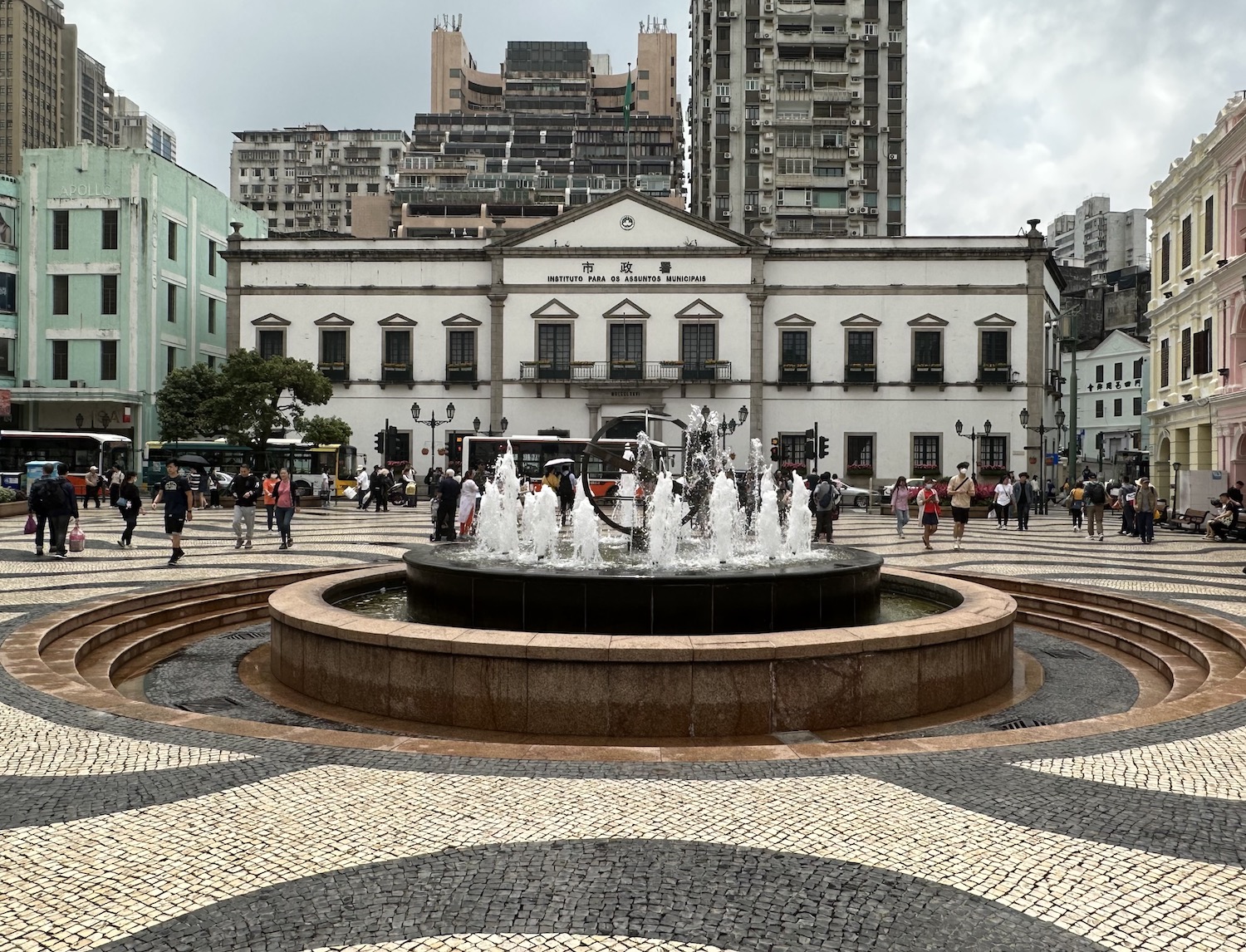
There are historic Chinese premises around here too, such as a trio of little temples: Sam Kai Vui Kun, Nu Wa and Na Tcha. Rua da Felicidade, the Street of Happiness, once the heart of the red-light district and now a 100m-long photogenic magnate for tourist souvenir hunters, open 11am to 1pm, has been used by Hollywood, drawn to its Chinese-style colourful shuttered two-storey terraces. On it are some important local eateries, including Cheong Kei Noodle, recommended by the Michelin Guide, and Belos Tempos, serving Macanese favourites like galinha Africana (African chicken with coconut, garlic and chillies), casquinha (stuffed crab), and minchi (minced meat).

The Chinese living here, and indeed on the Mainland, were targets of the Catholic missionaries who came along with the newly arriving Portuguese traders. Jesuits first landed in the 1560s, followed by Dominicans in the 1580s, and both orders soon set about constructing churches and schools. The primary Dominican landmark is St Dominic’s Church, built in the Baroque style on Senado Square in 1587.

The Jesuits built the Cathedral of the Nativity of Our Lady out of wood in 1622, though it has changed somewhat since then; it was rebuilt in stone in 1850, then again in 1937.

The most treasured religious site in Macau, and one of the greatest Christian monuments in all of Asia, are the ruins of the Jesuit Cathedral of St Paul. Built in 1602, a fire in 1835 destroyed all but the stairway and the glorious façade, now hauntingly and beautifully restored and buttressed.
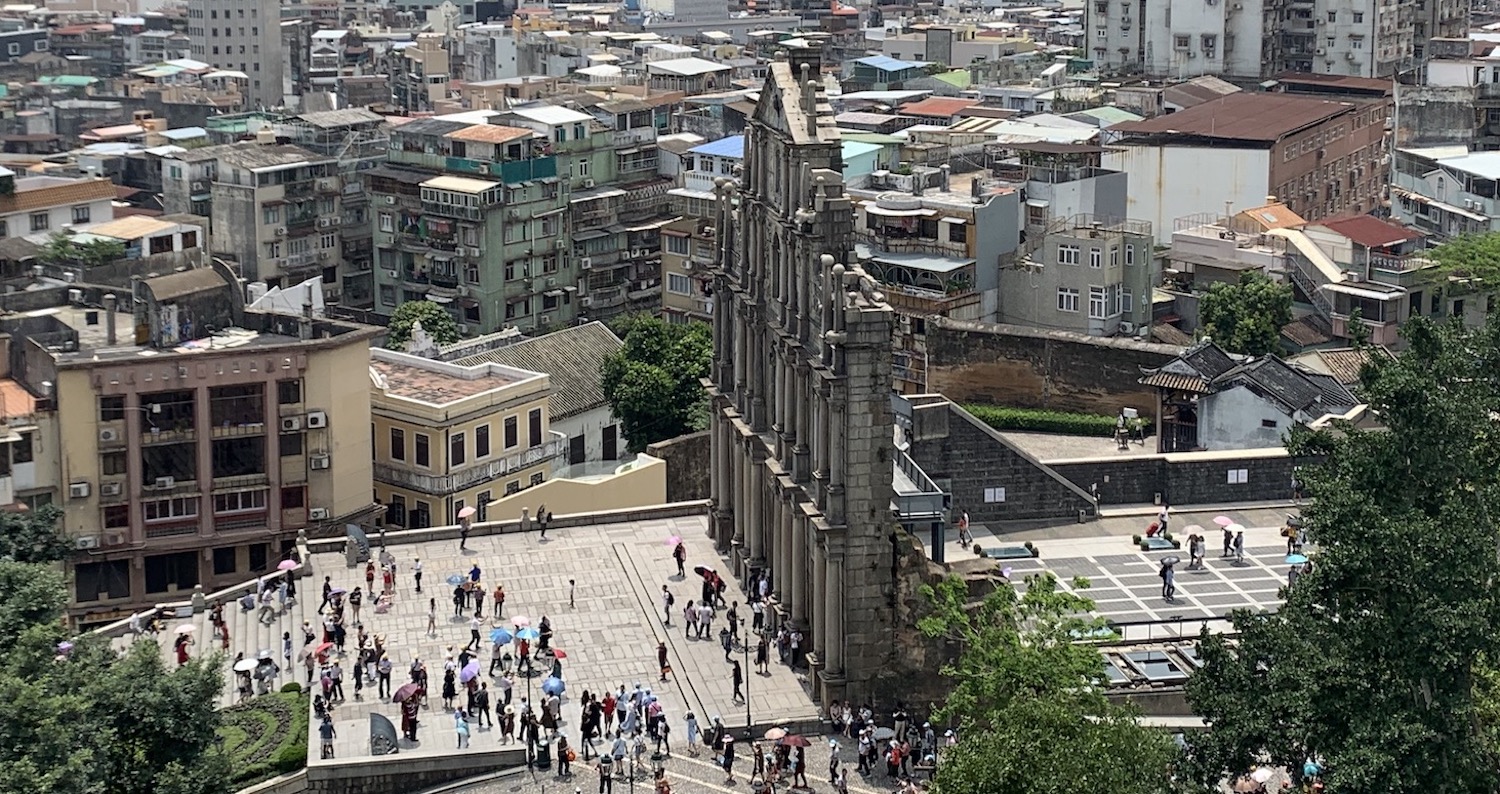
The best view of St Paul’s is from the battlements of Fortaleza do Monte on nearby Mount Hill. Established by the Portuguese from 1617 as the city’s principal military defence, there are look-outs in all directions over the modern city, though originally the parapets were crenulated for the installation of thirty-two canons, none of which were facing mainland China; their purpose was to see off Dutch incursions from the ocean. These days, it hosts Macau Museum.
The other wonderful panorama of the city is from its highest point, the Guia fortress, in the north of the Peninsula. Constructed from 1622, it remains in perfect condition. At the top is the Chapel of Our Lady of Guia, built in 1637 and home to some of Asia’s most important frescoes, side-by-side with the oldest modern lighthouse on the China coast, added in 1865. In the foothills is the all-powerful Beijing Liaison Office.
You can either walk up to Guia or take the cable car from Flora Gardens; at 186m, it is the shortest such ride on the planet, taking just 80 seconds. Flora Gardens is north of Guia, heading towards Iao Hon, the most densely populated district of the most densely populated place in the world, with more than 170,000 people per km2.
Iao Hon is only one of the neighbourhoods in Old Macau stricken with poverty. Many live in tiny sub-divided apartments in walk-up tenements and tumbledown high-rises, all with anti-theft caged windows that make them look and feel like prisons. Many of these people scrape a living in menial jobs at the casinos and after you have won or lost what might be nothing to you but a month’s wages to them, it is salutary to walk about these streets.
In the heart of this community is the large and ornate Kun Iam Temple, the oldest in Macau. It was founded in the thirteenth century, although the present structure dates from 1627.
Casino gambling was legalised in 1962 and the gaming industry initially operated under a government-licensed monopoly granted to the Sociedade de Turismo e Diversões de Macau, a private company owned by the legendary Stanley Ho and his family.
Abutting the poverty of Old Macau, you will find the Lisboa in a classic art deco design and full of feng shui touches, the first hotel-cum-casino Ho built, in 1970, which set off the modern gambling boom. Ho created resorts where people could bet all day and sleep at night without leaving the premises, and he introduced Western slot machines and games such as blackjack and craps alongside Chinese staples baccarat and si bo, played with 6-sided dice. Today, the Lisboa’s Guincho A Galera restaurant is highly recommended.
The Lisboa looks its age and since 2008 has been dwarfed by the huge gold leaf of the Grand Lisboa, rising 261m above what is now a handful of bigger, swankier casinos. The Grand Lisboa has both of Macau’s three Michelin-starred restaurants: Eight and Robuchon Au Dome.
Nearby is the Wynne Macau, which has the city’s obligatory dancing fountains (there is a show every fifteen minutes), as well as the MGM, Star World and twenty-odd others. Like all casinos in Macao, they accept Chinese renminbi and Hong Kong dollars as well as Macanese patacas or MOP$.
The lagoon between this casino district and Cotai Island is watched over by the Macau Tower. On the sixty-first floor, this has a traditional 360° observation deck behind windows as well as a heart-stopping Sky Walk around the rim outside on a glass floor without a railing. From it, there is an even more terrifying prospect: a bungee jump that at 233m is the highest in the world.
Not far from here is the large A-Ma Temple, which since the sixteenth century has climbed up the steps of the hillside. It is near the historic A Lorcha restaurant. A-Ma, or Tin Hau, is the goddess of the sea, from which the name Macau comes. A-Ma Gau means “gateway of the bay”.
Cotai Island
Although visitors do fly straight into Macau from all over the world, as many as 70% come from Guangdong. Most of the rest arrive from Hong Kong – residents and tourists alike – by the one-hour ferry from Sheung Wan or on a 45-minute bus from Lantau Island along the bridge and tunnel complex that amounts to the longest fixed-link open-sea crossing on earth. It cost almost €20 billion to build this 55km stretch, which opened in 2018. However you arrive, there will surely be hotel shuttle buses ready to meet you to transport you to whatever fantasy you have planned on the Cotai Strip.
Soon after the transfer of sovereignty from Portugal to China, the government ended Stanley Ho’s 40-year monopoly when in 2002 it allowed an open tender for casino licenses in order to attract foreign investors. Along with the easing of travel restrictions on Mainland visitors, this begat another period of rapid economic growth.
Although Sociedade de Turismo e Diversões de Macau still owns sixteen resorts in Macau, mega-casinos for round-the-clock gambling, owned by Las Vegas operators, began opening on the Cotai Strip from 2006; that said, several of those have ended up forming partnerships with various Ho family members. Despite the disruptions of the global financial crisis in 2008 and of course Covid from 2020-2023, there are now another twenty or so casinos here, doubling those on Macau Peninsula. Amazingly, to preserve their special status, online gambling is still illegal in Macau.
While there is increasing competition from newly-built major casinos across Asia, Macau’s gaming industry is by far the largest in the world. It has a tenth as many hotel rooms as Vegas, which has thirty casinos on its Strip and more than 130 across town, yet its gambling revenues overtook Vegas as long ago as 2007. With annual takings escalating from US$2bn in 2000 to almost US$40bn twenty years later, before the Covid lockdowns Macau was effectively seven times richer than Vegas. Now it is open again, Macau is widely expected to pick up where it left off and for anyone over the age of twenty-one the game is on.
Rumours that some of this cash might involve Chinese money launderers are hardly quashed by the fact that in every casino, at any time of the day or night, at any roulette table you can sit next to elderly women – probably from Iao Hon – who repeatedly reach into holdalls full of used notes and lose what must amount to their year’s salary in an hour without batting an eyelid.
The Cotai Strip is just 1km long and its north end is dominated by the Venetian, the biggest casino in the SAR and the tenth largest building in the world. Opened in 2007, it is replete with 3,000 suites, 150,000m2 of retail space, 100,000m2 of convention space, and 50,000m2 of casino space (containing 3,400 slot machines and 800 gambling tables of all sorts). On top of the 15,000-seat Cotai Arena for entertainment and sports events, there is an internal canal on which you can scoot about by gondola, and of course a Rialto Bridge next to a Campanile Tower, just like in Vegas.
Right next door is the almost-as-massive Parisian, which opened in 2016. Like its cousin in Vegas it is fronted by a gigantic Eiffel Tower, and this one holds 2,700 beds and 170 shops, mostly of the usual bland high-end variety that dominate here.
Opposite this pair is a building unique to Macao; well, it is a huge copy of Big Ben and the Houses of Parliament and London does have those but at least Vegas does not. The Londoner, which opened during the Covid lockdown in 2021, is full of red buses, red post-boxes, songs by the Beatles and adverts by David Beckham; yep, that’s what China thinks British national identity is all about.
The rest of the Strip is slightly less in-your-face, although having said that City Of Dreams and Studio City are both vast in scale, and you do reach the Wynne Palace on its own in-house cable-car (which is of course longer than that to get to the Guia fortress in town).
More are coming too. In the next year or so there will be a new Grand Lisboa Palace (yes, another one in the chain), a new Raffles, and a third phase of the Galaxy, among others. Furthermore, the six main operators (Galaxy, Melco, MGM, SJM, Venetian and Wynn) have already committed to invest another US$15bn over this decade in order to operate under licence extensions after 1 January 2033.
Despite their domination of the economy and the skyline, there is in fact surprisingly more to Cotai than casinos on the Strip. It is not all decadent razzle-dazzle, and a good way to explore the more sedate parts of the Island is on a rented bicycle.
I am flabbergasted to report that I have never seen more than a handful of Westerners in Old Taipa Village, up north, though it is always overcrowded with young Mainlanders exploring the gorgeous alleyways overflowing with little street-food stands and picture-perfect antique restaurants. The main – narrow, pedestrianised – thoroughfare is Rua do Cunha, overhung by neon signs competing to advertise stalls hawking pork buns, crab congee, fish balls, beef offal, pork jerky flattened into large square sheets then cut into strips by scissors, pastel de nata, egg waffles, serradura milk pudding, almond cookies and bubble tea as well as – tragically – shark’s fin.
The latest and greatest vendors will inevitably be those with the longest queues that snake way around corners, though these are bound to include longstanding favourites Tai Lei Loi (South China’s most renowned pork bun shop, founded in 1960; you need to be there at 2pm sharp for the daily bake fresh from the oven), Sei Kee Café (serving takeaway milky coffee since 1965) and Lord Stow’s Egg Tart Bakery (for pastel de nata since 1989).
Also hidden among the network of little alleys in Old Taipa Village are several excellent traditional Portuguese restaurants, which are so popular they are best booked in advance. Standouts include António and A Petisqueira.
The small islet of Coloane, now the south half of Cotai Island, was a fishing village and haven for pirates until the early twentieth century. The remnants of this past and its ancient ways of life are visible today in the colourful corrugated iron houses balancing on stilts over the sea along Rua dos Navegantes, with the skyrises of Zhuhai in China only a few hundred metres beyond.
Rua dos Navegantes runs into Avenida de Cinco de Outubro. Along here is the artfully simple Church of Sao Francisco Xavier, beautifully set back in Largo Eduarso Marques and flanked on both sides by half a dozen or more seafood restaurants. At the end is a little Tin Hau Temple.
There are two popular hotels on the south-east coast: the Grand Coloane is a large resort on Hac Sa Beach, and the Pousada De Coloane is a small boutique on Cheoc Van Beach. They are cheaper options than the Cotai Strip and allow easy access to the attractions down here.
There are four lazy pandas in the Pavilion at Seac Pai Van Park, which can be seen – for free – every day from 10am to 1pm and again from 2pm to 5pm: parents Kai Kai and Xin Xin, and their twins Jian Jian and Kang Kang.
There are a couple of legendary and atmospheric Portuguese restaurants here too: Miramar and Fernando’s, where it is far too easy to spend your winnings / drown your sorrows on a long and lazy afternoon chatting with the staff over bulging plates of salt cod, sardines, chorizo and warm crusty bread, and bottles of white port, that hide the red-and-white checked tablecloths. Like Macao, a hidden gem.
